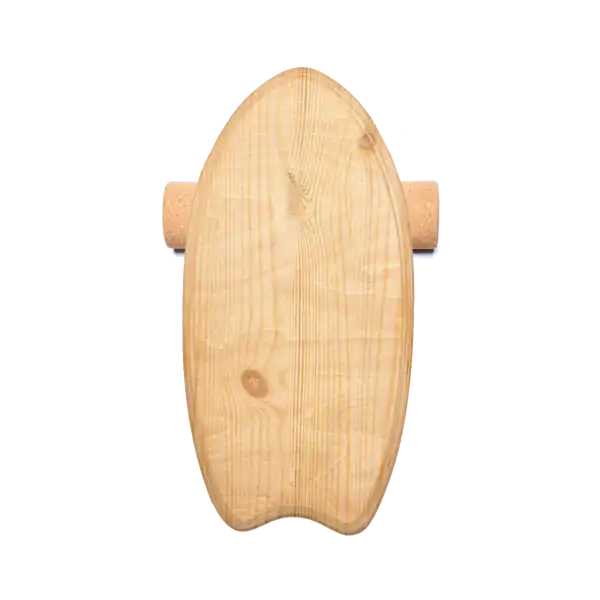5 Benefits of Using a Balance Board Daily
Introduction
Balance boards have been gaining popularity in fitness circles, physical therapy practices, and even everyday home workouts. These simple yet effective devices consist of a board placed atop a fulcrum, creating an unstable surface that challenges your body’s equilibrium. While they may seem like just another fitness trend, balance boards offer substantial health benefits that extend far beyond mere entertainment. From enhanced core strength to improved posture, these versatile tools can significantly impact your overall well-being when incorporated into your daily routine. So what are the balance board benefits?
In this comprehensive guide, we’ll explore the question many fitness enthusiasts ask: “What is a balance board good for?” By examining the five key benefits of regular balance board use, you’ll discover why this unassuming piece of equipment deserves a spot in your daily fitness regimen.
What Is a Balance Board?
Before diving into the benefits, let’s clarify what exactly a balance board is. A balance board (sometimes called a wobble board) is a fitness device designed to create instability, forcing your body to engage multiple muscle groups simultaneously to maintain equilibrium. They come in various styles, including:
- Rocker boards: These tilt only in two directions (forward and backward)
- Wobble boards: These feature a rounded base allowing for 360-degree movement
- Roller boards: These use a cylinder underneath a flat board for more advanced challenges
- Sphere boards: These utilize a ball as the base for the most challenging balance experience
The unstable surface creates a dynamic workout environment that engages your body in ways that static exercises simply cannot match. Now, let’s explore the numerous benefits this simple yet effective device offers.
Balance Board Benefit #1: Strengthens Core Muscles and Improves Stability
Perhaps the most significant balance board benefit is its remarkable ability to strengthen your core muscles. Unlike traditional ab exercises that target specific muscles, balancing on an unstable surface engages your entire core system simultaneously.
When you stand on a balance board, your body must constantly make micro-adjustments to prevent falling. These continuous corrections activate deep stabilizing muscles, including the transverse abdominis, multifidus, and internal obliques—muscles that are often neglected in conventional workouts. These deep core muscles form your body’s natural “corset,” providing crucial support for your spine and internal organs.
Regular balance board training leads to:
- Improved functional core strength for everyday movements
- Enhanced stability during other physical activities
- Better control of body movements
- Increased muscle endurance in stabilizing muscles
Research has shown that unstable surface training can increase muscle activation by up to 47.3% compared to performing the same exercises on stable surfaces. This makes balance board training one of the most efficient ways to develop comprehensive core strength.

The Classic Boarder Balance Board
Our flagship wooden balance board features a rounded deck crafted from pine with a clear grip finish. The Classic Boarder Balance Board provides the perfect balance of challenge and stability for all skill levels.
Balance Board Benefit #2: Enhances Proprioception and Body Awareness
Proprioception—your body’s ability to sense its position in space without visual cues—is a crucial yet often overlooked aspect of physical fitness. Balance board training significantly enhances this “sixth sense” through consistent practice.
When you stand on a balance board, your nervous system receives constant feedback about your body’s position. Your brain processes this information and sends signals to your muscles to make necessary adjustments. This neural pathway strengthens over time, similar to how muscles grow stronger with repeated use.
Improved proprioception provides several advantages:
- Faster reaction times during unexpected movement challenges
- Reduced risk of falls, especially important for older adults
- Better coordination for sports and daily activities
- Enhanced mind-body connection
Athletes particularly benefit from this balance board benefit, as superior proprioception translates to better performance in virtually any sport, from golf to basketball. However, this improved body awareness serves everyone well in navigating the physical challenges of daily life.
Balance Board Benefit #3: Accelerates Rehabilitation and Prevents Injuries
Physical therapists have long recognized the value of balance boards in rehabilitation programs. The controlled instability offers an ideal environment for rebuilding strength and confidence after an injury, particularly those affecting the ankles, knees, and lower back.
Balance board exercises can effectively:
- Strengthen ligaments and tendons around recovering joints
- Rebuild neural pathways interrupted by injury
- Gradually reintroduce challenging movements in a controlled manner
- Restore confidence in the injured body part
Beyond rehabilitation, regular balance board use serves as excellent preventative care. By strengthening the muscles, tendons, and ligaments around vulnerable joints, you create a natural support system that reduces injury risk. Ankle sprains, one of the most common sports injuries, occur 35-45% less frequently in individuals who incorporate balance training into their routine.
For those who participate in sports with high injury rates, such as basketball, soccer, or skiing, a balance board provides an effective tool for injury prevention. The improved proprioception and ankle stability directly translate to fewer falls and better recovery from unexpected movement challenges.

Custom Balance Board
Want something uniquely yours? We can create a custom balance board tailored to your specifications. Choose your wood type, dimensions, design elements, and difficulty level.
Balance Board Benefit #4: Improves Posture and Reduces Back Pain
In our increasingly sedentary world, poor posture has become epidemic, contributing to chronic back pain and reduced mobility. Balance board training directly addresses this issue by strengthening the muscles essential for maintaining proper alignment.
Standing on a balance board naturally encourages:
- Alignment of the spine in its optimal position
- Engagement of the often-neglected posterior chain muscles
- Strengthening of the muscles that support proper posture
- Increased awareness of body position
Many balance board users report significant reduction in back pain after just a few weeks of consistent practice. This occurs because the dynamic nature of balance training targets the deep stabilizing muscles of the spine—muscles that static exercises often miss.
For office workers and others who spend long hours sitting, incorporating short balance board sessions throughout the day can counteract the negative effects of prolonged sitting. Even 5-10 minutes several times daily can yield noticeable improvements in posture and corresponding reductions in back discomfort.
Balance Board Benefit #5: Boosts Brain Function and Cognitive Performance
Perhaps the most surprising balance board benefit relates to cognitive function. The complex neural engagement required to maintain balance on an unstable surface creates positive adaptations in the brain.
Research has demonstrated several cognitive benefits from balance training:
- Improved concentration and focus
- Enhanced ability to perform dual tasks
- Better spatial awareness
- Increased neural plasticity
These benefits stem from the cerebellum’s activation during balance challenges. The cerebellum, once thought to be primarily involved in motor control, is now known to play important roles in attention, language, and other cognitive functions.
Some studies suggest that balance training may even help prevent cognitive decline in older adults. The neural demands of maintaining equilibrium create positive adaptations in the brain that support overall cognitive health throughout life.
Incorporating Balance Boards Into Your Daily Routine
To experience the full range of balance board benefits, consistency is key. Here are some suggestions for making balance board training a regular part of your day:
- Begin with 5-10 minutes daily, gradually increasing as your balance improves
- Start with simple standing exercises before progressing to more dynamic movements
- Use your balance board while watching TV or during short breaks from work
- Combine balance board use with other exercises like squats or upper body movements
- Track your progress to stay motivated
For beginners, it’s advisable to place your balance board on a carpeted surface and have a stable object nearby to hold if necessary. As your skill improves, you can progress to more challenging environments and movements.
Conclusion
The benefits of using a balance board daily extend far beyond simple balance improvement. From strengthening your core to enhancing brain function, this versatile training tool offers remarkable advantages for people of all ages and fitness levels.
By incorporating just a few minutes of balance board training into your daily routine, you can experience improved stability, reduced injury risk, better posture, enhanced proprioception, and even cognitive benefits. Few fitness tools offer such a wide range of advantages with such a small investment of time and money.
Whether you’re an athlete looking to improve performance, recovering from an injury, seeking to reduce back pain, or simply wanting to enhance your overall fitness, a balance board provides an effective solution. The question isn’t so much “What is a balance board good for?” but rather, “Why aren’t you using one already?”
Start with modest goals, maintain consistency, and you’ll soon discover firsthand why balance boards have become an essential component in fitness programs worldwide.
